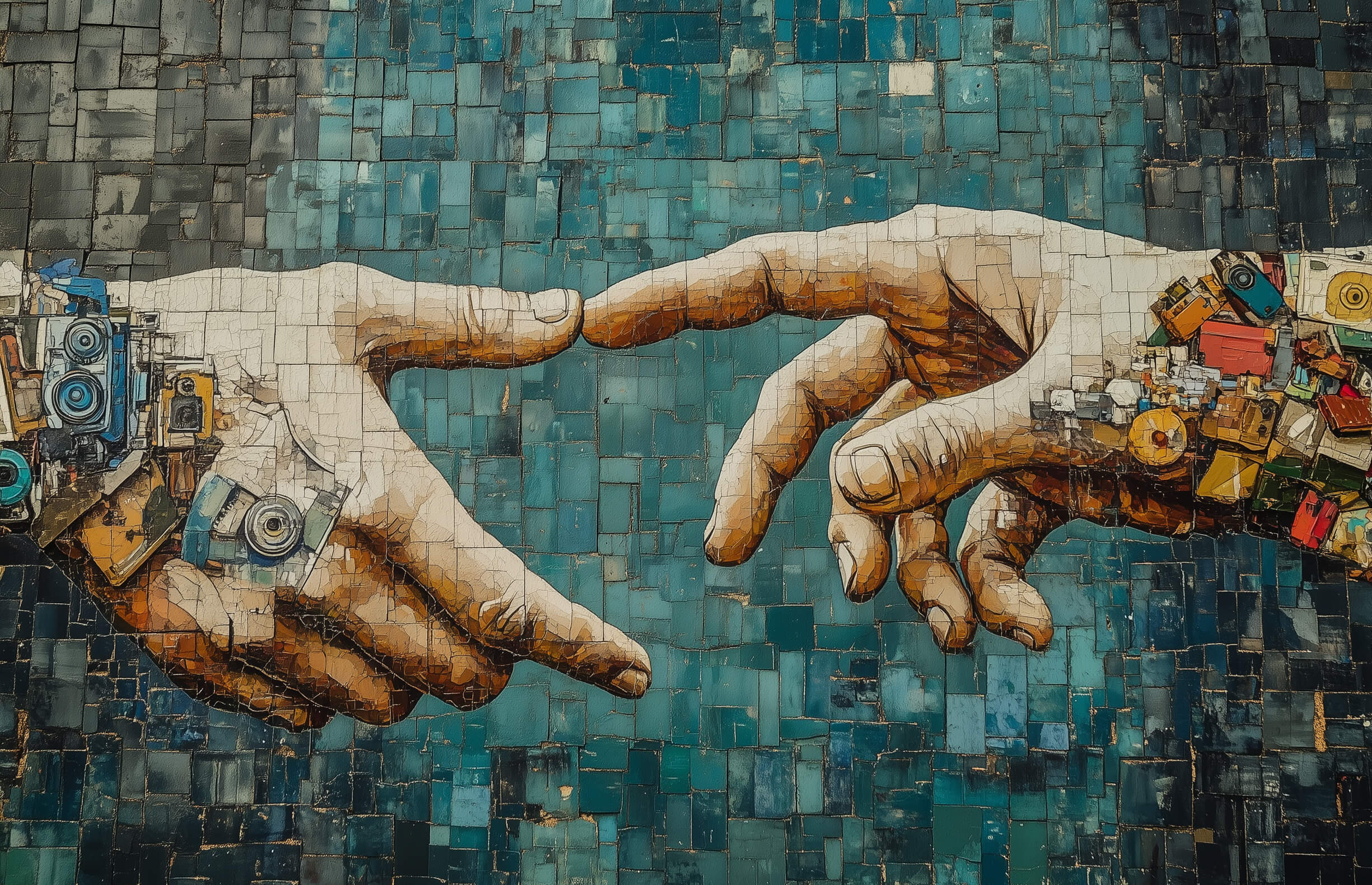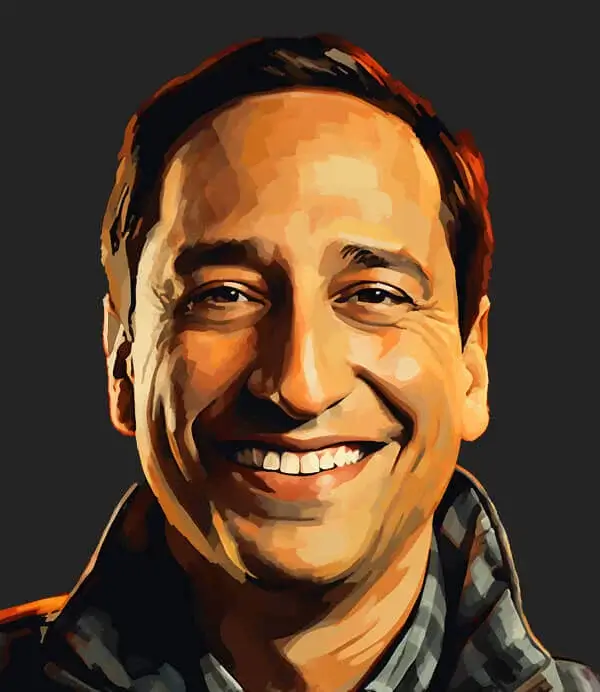Creativity is often misunderstood as an exclusive gift possessed only by artists, musicians, and innovators. In reality, creativity is a fundamental human ability, present in problem-solving, leadership, and daily decision-making. The challenge is not whether we are creative, but rather how we can cultivate and channel that creativity effectively (Runco & Jaeger, 2012).
This guide delves into the mechanics of creativity, uncovering what nurtures it, what obstructs it, and how individuals can cultivate their creative genius. It explores what fuels creativity, what blocks it, and how individuals can develop a structured approach to harnessing their inner creative power. By understanding the science behind creativity and applying practical techniques, anyone can unlock their full creative potential.
The Science of Creativity
Creativity is not merely about sudden inspiration—it is a cognitive process driven by the brain’s default mode network (DMN), which is responsible for idea generation and divergent thinking (Beaty et al., 2014). Neuroscientific studies suggest that creativity thrives on making connections between seemingly unrelated ideas, which is why exposure to diverse experiences enhances creative output (Simonton, 2003). The role of emotions in creativity is also significant. Research by (Fredrickson, 2001) found that positive emotions broaden cognitive flexibility, making individuals more likely to think outside the box. Conversely, fear and self-doubt can suppress risk-taking and originality (Amabile, 1996). The growth mindset, a concept developed by psychologist (Carol Dweck, 2006), is essential for fostering creativity. Those who believe abilities can be developed through effort are more likely to experiment, take risks, and persist in creative endeavors.
Common Barriers to Creativity and How to Overcome Them
Fear of Failure: Many people hesitate to express creative ideas because they fear criticism or failure. However, failure is a fundamental part of innovation. Thomas Edison, for example, conducted thousands of unsuccessful experiments before developing the lightbulb, yet each “failure” was a step toward success. To overcome this fear, individuals should reframe failure as experimentation. Dweck’s research shows that adopting a growth mindset—where challenges are seen as learning opportunities—significantly enhances creative confidence (Dweck, 2006).
Overthinking and Mental Blockages: Creativity can also be hindered by excessive analysis. When the mind is overloaded with structured thought, it struggles to generate novel ideas (Nielsen & St. John, 2001). One effective solution is mind-wandering—a process that allows the subconscious mind to make unexpected connections. Studies suggest that engaging in activities such as walking, listening to music, or daydreaming enhances creative problem-solving (Smallwood & Schooler, 2015). Additionally, 396Hz Solfeggio frequency music has been linked to reducing fear-based thinking and subconscious negativity (Horowitz, 1998). While scientific validation of these frequencies is still emerging, many creatives report enhanced focus and mental clarity when using sound therapy.
The Comfort Zone and the Illusion of Knowledge: Creativity stagnates when individuals remain within familiar routines. The illusion of knowledge—believing we already understand a subject fully—can close the door to new insights (Boorstin, 1983). Innovators such as Albert Einstein and Charles Darwin practiced slow-motion multitasking, shifting between different projects to allow ideas to cross-pollinate (Harford, 2016). This technique encourages flexible thinking and prevents creative stagnation. To cultivate this mindset, individuals should intentionally step outside their expertise. Reading about unrelated subjects, exploring new hobbies, and engaging in conversations with diverse thinkers can significantly expand creative horizons.
Strategies to Unlock and Harness Creativity
Creativity does not emerge from passively waiting for inspiration—it comes from doing. Pablo Picasso famously stated, “Inspiration exists, but it has to find you working” (Daix, 1979). Whether through writing, designing, or experimenting, taking small, consistent creative actions fosters long-term innovation. Developing a daily creative habit, such as journaling or free-writing, has been shown to enhance creative fluency (Henry, 2013). The key is to start without judgment—allowing ideas to flow without the pressure of perfection.
Structured problem-solving is essential, but unstructured thinking is equally important. Research has found that daydreaming enhances creative problem-solving, as it allows the brain to form unexpected connections (Smallwood & Schooler, 2015). Scheduling mental rest periods—such as taking a walk, gazing at the sky, or engaging in free play—creates the mental space needed for fresh ideas to emerge. Similarly, keeping a creativity journal can be a powerful tool, as ideas are fleeting and can be lost if not captured. Studies show that writing down thoughts enhances creative thinking by externalizing and refining ideas over time (Sawyer, 2012). Even if an idea seems trivial at first, it may later evolve into something meaningful.
Creativity also thrives in environments that encourage innovation and new perspectives. Research suggests that surrounding oneself with creative individuals enhances one’s own creative thinking (IBM Global CEO Study, 2010). Engaging with creative communities—whether through workshops, online groups, or collaborative projects—exposes individuals to fresh ideas and inspiration.
Additionally, optimizing the physical environment can play a crucial role in fostering creativity. Studies indicate that natural environments enhance cognitive flexibility, a key component of creative thinking (Berman et al., 2008). Simple adjustments—such as working in a visually stimulating space, adding plants, or listening to instrumental music—can create a setting that encourages inspiration and innovation.
The Role of Technology in Creativity
Technology is a double-edged sword when it comes to creativity—it can be a powerful enabler, but it can also serve as a major distraction. On one hand, digital tools provide unprecedented access to resources, creative platforms, and global collaboration. From graphic design software to AI-driven brainstorming assistants, technology has transformed the creative process, making it easier than ever to generate, refine, and share ideas. Online platforms like Adobe Creative Cloud, Procreate, and Blender allow artists, designers, and writers to push their creativity to new levels. Additionally, artificial intelligence can assist in content generation, helping to amplify human creativity rather than replace it.
However, while technology expands creative possibilities, it can also fragment focus and reduce the quality of deep thinking. Excessive screen time, constant notifications, and the fast-paced nature of digital consumption can overstimulate the mind, making it harder to engage in the slow, thoughtful processes that true creativity often requires. Research by (Mark, 2018) found that the average worker experiences an interruption every three minutes, significantly reducing the ability to concentrate and engage in meaningful problem-solving. The brain requires uninterrupted stretches of deep work—a concept popularized by (Cal Newport, 2016)—to reach creative breakthroughs. When digital distractions constantly pull attention away, creative ideas struggle to develop fully.
To counteract this, implementing “digital detox” periods can improve creative flow and sustained attention. Setting aside dedicated screen-free time—whether for an hour, a day, or even a week—allows the mind to reset and enter a more natural rhythm of deep thinking. Simple strategies such as turning off notifications, using “focus mode” apps, or engaging in analog creative activities like sketching or handwriting ideas can help restore mental clarity. Additionally, technology-free zones—such as a workspace without phones or a designated screen-free creative retreat—can create an environment that fosters uninterrupted inspiration.
The key is not to reject technology outright but to develop a mindful approach to its use. By balancing digital tools with periods of analog creation, deep work, and intentional reflection, individuals can maximize the benefits of technology while preserving the cognitive space needed for true creative breakthroughs. Technology should serve as an aid to creativity—not a replacement for the deep thinking, imagination, and curiosity that fuel it.
Conclusion
Creativity is not an exclusive gift bestowed upon a select few; it is a skill, a mindset, and a way of engaging with the world that can be nurtured and developed over time. While some individuals may have a natural inclination toward creative thinking, research consistently shows that creativity is not fixed—it thrives with practice, exposure, and the right mindset. By actively overcoming fear, embracing curiosity, and making creativity an intentional part of daily life, individuals can unlock their full potential to innovate and express new ideas in meaningful ways.
The most creative people in history—from inventors and artists to entrepreneurs and scientists—were not necessarily the most talented from the start. They were those who dared to question assumptions, experiment relentlessly, and see failure not as an endpoint but as a necessary step toward discovery. True creativity comes not from waiting for inspiration to strike, but from engaging with the process of exploration, iteration, and refinement.
Ultimately, creativity is about seeing possibilities where others see limitations. It is the driving force behind every breakthrough, every innovation, and every form of human expression that has shaped our world. Whether it is used to solve problems, design new experiences, or reimagine the future, creativity is a powerful tool that transforms imagination into reality. But to harness it, one must be willing to step beyond comfort zones, challenge traditional thinking, and embrace the endless potential of their own mind.
The question is not whether you are creative—because everyone possesses creativity in some form. The real question is: How will you cultivate it, nurture it, and bring it to life? The answer lies in your hands.
References
- Amabile, T. M. (1996). Creativity in Context: Update to the Social Psychology of Creativity. Westview Press.
- Beaty, R. E., Benedek, M., Silvia, P. J., & Schacter, D. L. (2014). “Creative cognition and brain network dynamics.” Trends in Cognitive Sciences, 20(2), 87–95.
- Berman, M. G., Jonides, J., & Kaplan, S. (2008). “The cognitive benefits of interacting with nature.” Psychological Science, 19(12), 1207–1212.
- Dweck, C. (2006). Mindset: The New Psychology of Success. Random House.
- Harford, T. (2016). Messy: The Power of Disorder to Transform Our Lives. Riverhead Books.
- Mark, G. (2018). Attention Span: The Science of Our Diminishing Focus.
- Runco, M. A., & Jaeger, G. J. (2012). “The standard definition of creativity.” Creativity Research Journal, 24(1), 92–96.
- Smallwood, J., & Schooler, J. W. (2015). “The science of mind wandering: Empirically navigating the stream of consciousness.” Annual Review of Psychology, 66, 487–518.


